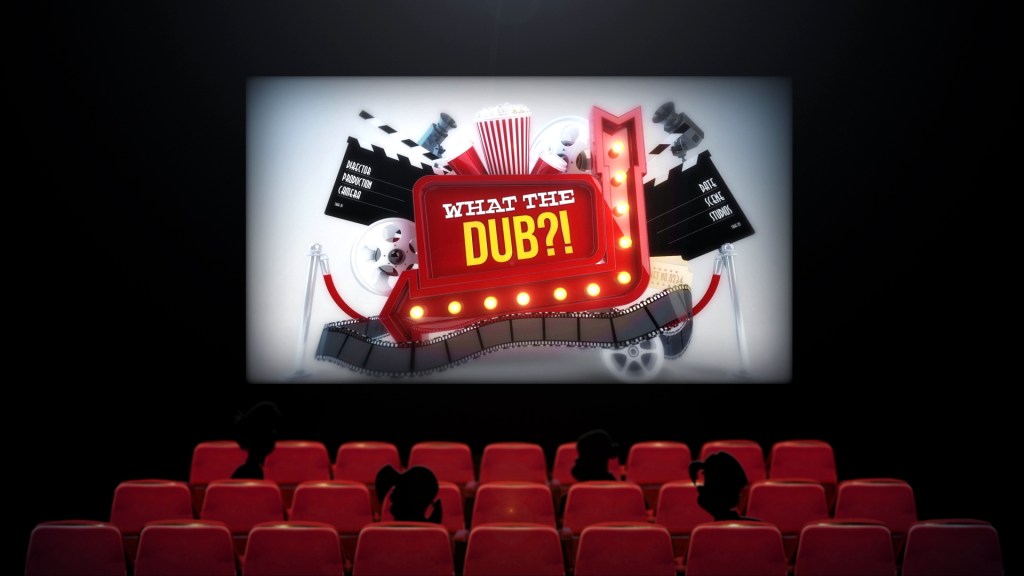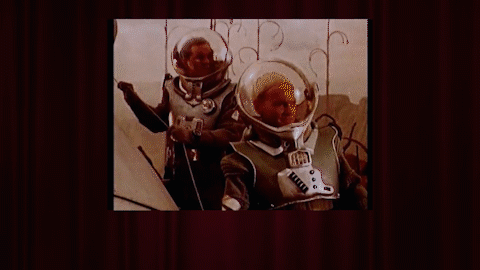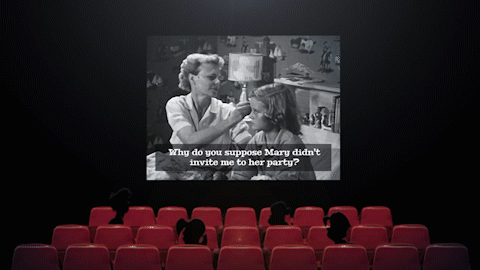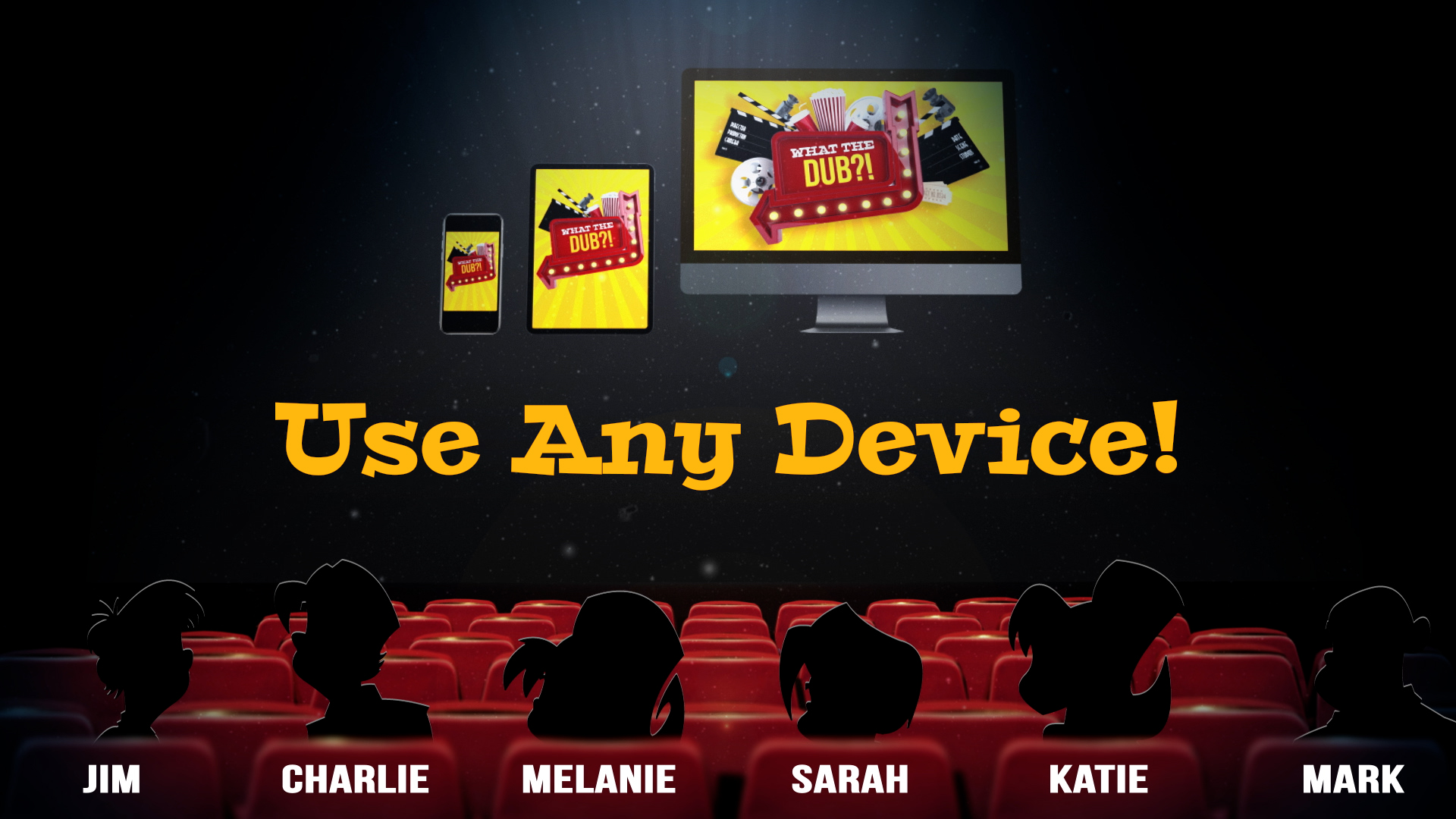If you had asked two years ago what Wide Right Interactive’s follow up to Freedom Finger might look like, the answer was almost assuredly not “party game dubbing over bad movie clips.” From the irreverent hand-drawn shoot-em-up featuring a middle-finger spaceship, the studio proceeded to then make a party game unlike any other, mashing up the likes of Mystery Science Theater 3000 with that familiar Jackbox party game formula for one of the most hilarious party experiences we’ve ever played. After some time with What The Dub?!, we felt the irresistible urge to sit down with the minds responsible to learn more about how the idea came to be, why it’s sooooo different from Freedom Finger, comparisons to Jackbox, and just how painful mining awful public domain movies, PSAs, and industrial films ended up being.
Wide Right Interactive Creative Director Jim Dirschberger and Head Programmer Mark Zorn were kind enough to press pause on what I can only assume was a riveting ’50s Italian sci-fi banger and hop on a Zoom call to chat. After the prerequisite banter of shared experiences from the pandemic, it transitioned into talking about developing a party game while the world was locked down and social distancing.
“The core kind of started in 2019 when we were finishing up Freedom Finger,” Dirschberger said. In the final month before launching Freedom Finger on PC and Switch in late 2019, Dirschberger and Zorn found a shared appreciation of terrible movies, watching RiffTrax “I think 24 hours a day,” Dirschberger said. “We just had the tab open, and we’re watching Cool as Ice and Roller Gator and just the worst movies ever.” But the idea for What The Dub?! started even before that, a few years prior, when Zorn had basically made a rough browser-based version of What The Dub?! in a game jam, using YouTube clips from Japanese monster movies. At the behest of a friend, he revisited the idea last summer and started fleshing it out.
“It felt like a natural fit to kind of try and make watching bad movies and interacting with them a full game,” Dirschberger said. Dirschberger and Zorn were unfazed by the pandemic lockdowns being a potential barrier for a party game, and even somewhat bolstered by newfound trends in remote gatherings, seeing people get together over Zoom. With a party game like What The Dub?!, all players need to is a device with a browser, which means anyone can play from anywhere if they have the proper room code and a way to stream or view the game screen. You don’t all have to be in one place. “Screen share…is all you need,” Dirschberger said. “You just need one person to host the game, and make sure everyone else can see the video clips.”
Still, Wide Right Interactive isn’t content leaving it up to players to figure out for themselves. “We’re working on some additional features that we hope to launch shortly after the game’s release that we hope is going to make that a lot easier as well.” And Wide Right wants to support the game long term, with added features, quality of life updates, and even additional clips.
“Our first big patch post-launch that we’re looking at is adding some more clips,” Zorn chimed in. “Always looking for more clips and ways to add more variety to the game.” He also further elaborated that they hope to have a “streaming-light” version that provides easier ways for players to share the screen with without necessarily needing to utilize Zoom or Twitch as an interim solution, syncing the game across multiple consoles. From the sounds of things, it would effectively add an “online multiplayer” mode to What The Dub?!, with the possibility of cross-play syncing also factoring in. One player on a Switch could sync up with somebody on their PS4 or PS5, while yet another player joins in from the Steam version of the game, all synced to the same room code.
What The Dub?! Mining the Depths of Bad Public Domain Films
With more clips confirmed on the way, what dark mines of awful film did the team go down to find these scenes, and where are they willing to go from here? While I haven’t seen even close to the full 300+ clips that have launched with the game, the ones that I have come across so far are hilariously cringe-inducing, making me wonder how they ever got recorded to film in the first place. What The Dub?! hinges on using clips that are so bad, they somehow loop right back around to being good. “That’s the art of bad movies,” Dirschberger said. “Kind of like a weird film archaeologist where you’re just digging through trash trying to find that one diamond in the rough.”
“I feel like it’s harder to make a good bad movie than it is to make a good movie,” Dirschberger said. “You have to have the intent of making something good, and be sincere in your efforts to pursue it, but have none of the talent or wherewithal to execute it. So it kind of folds into itself and crystallizes as like The Room or any of these PSAs, where you’re just like… ‘who…? I have so many questions for the people that made this…'”
Both Dirschberger and Zorn started gleefully talking about some of those gems they’d found, including a manners PSA with a moving chalkboard stick figure, one about dentistry with animated teeth popping out of mouths, and Cold War-era “duck and cover” style PSAs with kids in lead lined suits that looked like they’d fallen right out of Fallout 4. “Apparently just lying down on the ground is just the best strategy to not just being instantly vaporized,” Dirschberger laughed.
But before they can find those gems, they start with a broad scope, looking at films that they know or believe to be in the public domain. And then they start watching them and taking notes, keeping mind that to fit within the game, the scene has to meet a few key criteria. It has to be generally understandable within the out of context clip, and not exceed 10 seconds, or the replays with the newly embedded audio tend to get a bit too long winded. “That can be tricky. Just because a movie’s bad doesn’t necessarily mean that it has the right kind of clip,” Dirschberger said. Once they’ve started to whittle down clips that they feel would work for the game, the homework process begins, acquiring the clearances and rights to make sure they can use them.
Between Dirschberger and Zorn, it seems like Zorn drew the short stick on having to sit through lengthy terrible films. “Bad Italian ’50s sci-fi was a thing, apparently?” Zorn said incredulously. There was a glint of pain behind his eyes at the memory of sitting through these films.
“I was smart. I went with the short stuff; the PSAs and the commercials. But Mark, he’s so dedicated to this game, he almost did all of the features exclusively,” Dirschberger said. Zorn’s face appeared like a weary traveler who had journeyed through one too many bad retro-futuristic films, yet reserved and ready to brave another. “Which meant that he was watching like 90 minutes of the most garbage sci-fi from like, pre-war cinema.”
“Just to pull out that one clip,” I said.
Dirschberger smirked and shook his head. “Or sometimes coming out completely empty-handed.”
Zorn chuckled and hung his head with a sigh. “Yeah, there were a few movies where I got like an hour into it and I hadn’t found a single clip and I was just like ‘what am I doing with my life?'” What was Zorn looking for across the 30+ feature films he watched? Question/response, weird situations with a line of dialog that could be removed for the dub, anything quippy and clever. While it all works to hilarious effect in the final game, Zorn sighed and grinned, “A lot—a lot—of really not good movies.”
Dirschberger mentioned one set of clips in the launch game that is exclusive to the PC version of the game because of ratings. “We found a PSA about puberty, which was just…” Dirschberger closed his for a moment and chuckled. “That was just a home run. Every clip was just like ‘mwah!'” He did a chef’s kiss gesture. Those extra five to ten clips are only on Steam, however. “They were a little ‘too hot for TV,’ or whatever,” he said of the consoles’ rating restrictions.
The launch clips in What The Dub?! consist mostly of public domain film, PSAs and industrial movies, but the future could mine other awful-yet-wonderful scenes from TV or, if Dirschberger has his way, video games. “I would love to get into TV, or even—there’s no shortage of video games that have terrible cutscenes and terrible dialog,” he says. “If we could license some of the original Resident Evil, you know, who doesn’t want to re-dub ‘Jill Sandwich?'”
“I think, regardless, we’re going to support the game,” Dirschberger said, talking about watching how What The Dub?! is received critically and commercially. “At a base level, that’s what we believe in. There’s always room for improvement. The launch isn’t the end.” Dirschberger clarifies that doesn’t mean they are shipping a half functioning game, but they want to “continue to add value” to What The Dub?! beyond its core release. Zorn says that it’s about keeping the experience fresh, whether that’s adding new clips over time or little tweaks to the formula. That will also include responding to the community as they see how players interact with the game. “I’m looking for that feedback,” he says. “I love to know how people are playing it and how I can make it more enjoyable for them.”
What The Dub?! Building a Party Game
Discussing the tech behind What The Dub?!‘s AI text-to-speech voiceover work and the general idea of a party game, Wide Right took the approach of working smarter, not harder. The technology is basically out-of-the-box services that already exist, using Google Cloud text-to-speech. But Zorn is excited by the ability to manipulate the text-to-speech AI using things like punctuation to change the cadence and “almost give a performance.” The audible reading of the dub is critical to What The Dub?! overall, something that sets it apart from other party games in a big way. “It makes it a lot more interesting than just text on the screen.”
Zorn also pushed for the inclusion of sound effects, which, as we mentioned in our review, can be the “pièce de résistance” that really caps off a great quippy dub. It started with simply adding the classic public domain Wilhelm Scream in. “Well if you can add a scream, why not a toilet flush, or barfing, or any other weird, crazy, disgusting noises?” Dirschberger said. “Sometimes a well-placed sound effect can really clinch the round for you.”
While it may seem like the ideas simply fell into place—using proven infrastructure for party games, taking the beloved idea of dubbing bad public domain films, and using existing services for the text-to-speech—the most difficult part of development was reining in that scope and sticking to the relatively simple idea of a bad movie night party game.
Dirschberger says that overall development of What The Dub?! was very different from Freedom Finger in it’s more narrow scope and focus. “Freedom Finger had a lot going on.” In contrast, What The Dub?! is more focused, doing one thing and refining it, rather than expanding the scope. “With Freedom Finger, it was our first game, we basically indulged all of our wants.” What The Dub?! focused on the core idea and strengthening that feature, rather than expanding and implementing additional ideas that didn’t necessarily support that core. “That’s what I’ve taken away from this experience, is just the power of staying focused. It seems like a pretty simple game, but I like to consider it more efficient and economical,” Dirschberger said.
The efficient and economical approach allowed Wide Right Interactive to launch What The Dub?! for just $7.99 on a whole host of platforms, making it almost a no-brainer to pick up and have in your arsenal for bad movie party game nights. “If someone wants a party game that isn’t $40 and they can jump into and play with friends…the barrier to entry in this game should be zero.”
And Wide Right isn’t worried about comparisons to Jackbox, MST3K, or RiffTrax. “Those comparisons are going to happen regardless,” Dirschberger said. “I was actually surprised a lot of people compared Freedom Finger to Cuphead.” He says that being compared to a game that’s actually good is an honor. “Being compared to Cuphead? Sure! That’s a beautiful game, so thank you!” He said. “Jackbox is kind of the de facto party games—the go-to. Great! They make good games.” For the Jackbox audience to see comparatively similar value in What The Dub?! is an awesome prospect for the team.
Zorn says that What The Dub?! is already very different from a lot of what Jackbox has done, though the benefit in its similarities comes from the familiarity people already have. “People understand how to play that type of game. They know now, ‘oh, I can pull out my phone and I can join and that’s cool.’ So that barrier to entry is even lower for us because we don’t have to sell them on the idea.” Zorn is excited at the prospect of the focus being on the gameplay itself—dubbing bad scenes—rather than trying to pioneer the party game genre of games played via tablets and phones.
Wide Right’s Next Left Turn
Beyond What The Dub?!, what’s next for Wide Right Interactive? Dirschberger sees it as a blend between Freedom Finger and What The Dub?! No, that’s not to say that their next game will be a hand drawn shmup bad movie dubbing party game monstrosity, but rather they’d like to see what they can do with the a more focused scope, but perhaps allowing some indulgence and craftsmanship along the way.
Dirschberger previously worked in traditional film and animation, and notes that his own filmography is all over the place too. “There’s no rhyme or reason. I’ve done traditional drama documentaries, and I did a kids show, and we do commercials. I love mixing it up because it always keeps it interesting.” He notes, however, that despite differing genres, there’s always something to carry over and learn from your previous projects and apply forward.
As for what that next game might look like? Wide Right has proven they know no boundaries, and won’t paint themselves into any kind of corner on genre or themes. “We’re not just doing deck builders or first-person shooters. I mean, we could do those games, but maybe not. Maybe the next game will be a fishing simulator or something equally off-the-wall,” he pauses as we all laugh. “It’s not going to be that. We have no plans for that.”
“Never say never!” Zorn chimes in. It’s clear he’s now fomenting plans for some twisted take on a fishing simulator in his mind. “Ultimately we’re just trying to make games that people are going to enjoy.”
What The Dub?! is available now for $7.99 on the PlayStation Store, Xbox Store, Nintendo eShop, and Steam. Still on the fence about picking it up? Don’t miss our What The Dub?! review, which gives you your own [Missing Text] to dub in part of the review for yourself.
A huge thank you to Jim and Mark for taking some time away from terrible recorded media to talk to us about What The Dub?! You can let Jim and Mark know what you think of What The Dub?! on their social channels (@WideRightGames on everything), and Mark’s TikTok and Twitter.











